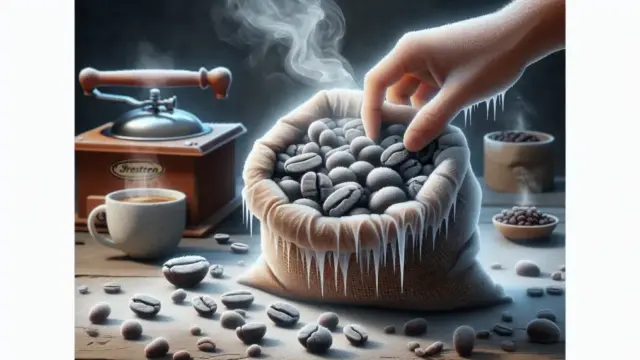To truly enjoy cooking and savoring your coffee, it’s essential to store your flour and other powdered ingredients properly. Maintaining their freshness is key, and protecting them from moisture and light can significantly extend their flavor and shelf life. In this article, we’ll dive into simple yet effective methods for storing these essentials at home.
We’ll highlight important tips to be mindful of, discuss the benefits of refrigeration, and share tricks to adapt your storage methods based on how frequently you use your ingredients. After reading this, managing your pantry will surely become a more enjoyable task!
- In-depth insights on storing powdered ingredients
- The advantages of refrigeration for your staples
- Creative storage solutions based on usage frequency
Key Points for Storing Powdered Ingredients
To keep powdered ingredients fresh and tasty, how you store them is crucial. Moisture and light can significantly diminish their quality, so understanding the right storage methods can help you enjoy your powders for a longer time. Here are some essential tips for ensuring your powdered ingredients stay in top condition.
Choosing the Right Container to Prevent Moisture
When it comes to storing powdered ingredients, selecting the right container is the first step. If placed in a humid environment, powders can clump together or lose their flavor. Therefore, it’s essential to choose a container that can be sealed tightly. Glass or plastic airtight containers are particularly effective at keeping moisture out. Additionally, consider the size of the container; choose one that fits the amount you typically use.
Keeping your container clean is also vital. Make sure to wash and dry it thoroughly before adding any powder, as this helps prevent excess moisture and maintain the quality of your ingredients.
- It’s important to choose a sealable container.
- Glass and plastic options are recommended.
- Keeping the container clean is essential.
Storage Methods to Shield from Light
Light is another factor that can affect the quality of powdered ingredients. Specifically, direct sunlight can degrade their aroma and flavor. Ideally, you should store powders in a dark place. Consider using kitchen drawers or a closet where light exposure is minimal.
If you’re using transparent containers, it’s crucial to cover them with something that blocks light. This simple step helps prevent deterioration and keeps your powders tasting fresh for a longer period.
As you delve deeper into storage methods for powdered ingredients, don’t forget about the importance of storing coffee beans as well. Like powdered ingredients, they also need protection from moisture and light. If this topic piques your interest, check out this article on “How to Store Green Coffee Beans for Freshness” for specific tips on keeping your coffee beans fresh.
- It’s ideal to store powders in a dark place.
- Use a light-blocking cover for transparent containers.
- Avoiding light helps preserve quality.
Is Storing Flour in the Refrigerator Effective?
Using the refrigerator to store flour is a common practice, but opinions on its effectiveness vary. Keeping flour in the fridge can help maintain a consistent temperature and humidity, which is expected to preserve its quality. However, not all types of flour are suitable for refrigeration. Let’s explore the benefits of refrigerating flour and how it differs from freezing.
Benefits of Refrigerating Flour
The biggest advantage of storing flour in the refrigerator is the ability to keep it at a low and stable temperature, which effectively prevents deterioration. This is especially beneficial in humid seasons or regions. Additionally, refrigeration can help deter pests, which is another significant benefit. By keeping flour fresh, you can enhance the flavor of your cooking and baking.
Moreover, if you manage the humidity levels inside the fridge properly, you can extend the flavor of the flour. However, it’s crucial to store flour in airtight containers when refrigerating. This prevents the absorption of odors from other foods in the fridge.
- Maintains a low and stable temperature, reducing spoilage
- Prevents pest infestations
- Preserves flavor when stored in airtight containers
Differences Between Refrigerating and Freezing
Freezing is an extremely effective method for long-term storage of flour. However, there are some key differences between freezing and refrigerating. The freezer allows for much longer storage, making it ideal for bulk purchases or infrequently used flour. In contrast, the refrigerator is better suited for short-term storage, making it perfect for flour you’ll use soon.
Additionally, when flour is frozen, it can sometimes crystallize upon thawing, so it’s essential to bring it back to room temperature before using it. Considering this extra step, refrigeration is often more convenient for regularly used flour.
If you’re interested in how to best store flour in the fridge, you might also find information on storing coffee beans helpful. Like flour, proper storage of coffee beans is crucial for preserving their flavor. Check out this article on “How to Preserve the Flavor of Coffee Beans: A Recommended Guide” for detailed tips on the right storage methods and container choices.
- Freezing is ideal for long-term storage
- Refrigeration is best for short-term use
- Be cautious of crystallization after thawing
Smart Storage Tips Based on Usage Frequency
When it comes to storing flour and other powdered ingredients, tailoring your approach according to how often you use them can lead to more efficient management. The methods and containers you choose for frequently used powders differ from those needed for long-term storage. In this article, we’ll explore the best practices for everyday powdered ingredients and important considerations for long-term storage.
Storing Frequently Used Powders
For powders that you use regularly, convenience and accessibility are key. Consider using airtight plastic or glass containers that can be easily placed on your kitchen counter or in a drawer. This approach minimizes the risk of moisture exposure while ensuring that you can quickly grab what you need.
Labeling your containers based on the type of powder is another helpful tip. This way, you can easily find what you’re looking for when you need it. These small adjustments can significantly reduce stress while cooking, creating a smoother experience in the kitchen.
- Use airtight containers to keep moisture out
- Store in easily accessible locations
- Label containers for easy management
Considerations for Long-Term Storage
When it comes to storing powders for an extended period, extra care is necessary. First and foremost, it’s crucial to choose the freshest ingredients feasible. As soon as you open a package, transfer the contents into an airtight container and keep it in a cool, dark place. While refrigeration or freezing can be effective, be mindful of the thawing process.
Additionally, don’t forget to regularly check the expiration dates. Older powders can lose their flavor and aroma, which can negatively impact the quality of your cooking. It’s essential to periodically review your stock and make an effort to use everything before it goes bad.
- Choose fresh powders whenever possible
- Store in airtight containers in a cool, dark place
- Regularly check expiration dates
Essential Tips for Keeping Your Flour Fresh
To ensure that flour and other powdered ingredients last longer, it’s crucial to pay attention to their expiration dates and storage conditions. Over time, these products can lose their flavor and aroma, so knowing the right way to store them can help you enjoy them at their best. In this section, we’ll explore the relationship between expiration dates and flavor, as well as the impact of storage conditions.
The Connection Between Expiration Dates and Flavor
Each type of flour or powdered ingredient has its own expiration date. Once this date passes, it often leads to a noticeable decline in flavor and aroma. This is particularly true for spices and coffee grounds, where freshness is key. When using powdered ingredients, it’s important to check the expiration date and choose the freshest options available.
Keep in mind that once a package is opened, the shelf life can decrease significantly. Therefore, it’s a good idea to use opened flour quickly. Be especially cautious about exposure to moisture and light, as these factors can accelerate spoilage.
- Keeping an eye on expiration dates helps maintain flavor
- Use opened products promptly
- Store in a cool, dry place away from light
The Impact of Storage Conditions
The way you store your flour can greatly affect its quality. If stored in a humid environment or a place with fluctuating temperatures, flour can clump together and lose its flavor. Maintaining proper storage conditions is vital for preserving the quality of your ingredients.
Additionally, flour can oxidize when exposed to air, so using airtight containers can help prevent this process. By doing so, you can keep your flour fresh for a longer period.
While we’ve covered how to store flour, it’s also important to consider how to keep coffee beans fresh. If you’re interested in this topic, check out our article on “How to Store Fresh Coffee Beans and Why It Matters” for detailed information on the best storage methods and tips for different types of coffee beans.
- Storage conditions directly affect flour quality
- Avoid humidity and temperature fluctuations
- Use airtight containers to prevent oxidation
Conclusion
To keep your flour and other dry ingredients fresh and delicious, it’s essential to master the right storage methods. Choosing the right containers to protect against moisture and light, and understanding the benefits of refrigeration or freezing, can significantly extend the shelf life of your powders. Additionally, being mindful of how often you use them and paying attention to their expiration dates is equally important. By keeping these tips in mind, you can enjoy your dry ingredients in their best condition.
I hope this article has provided you with some foundational knowledge about storing dry goods that you can apply in your everyday cooking and baking. Proper management of your flour and similar ingredients can greatly enhance your daily meals.
- Use airtight containers to shield from moisture and light
- Take advantage of refrigeration and freezing
- Pay attention to usage frequency and expiration dates
I encourage you to reflect on your own methods for storing dry ingredients. Feel free to share your thoughts and experiences in the comments section!














































































Comment